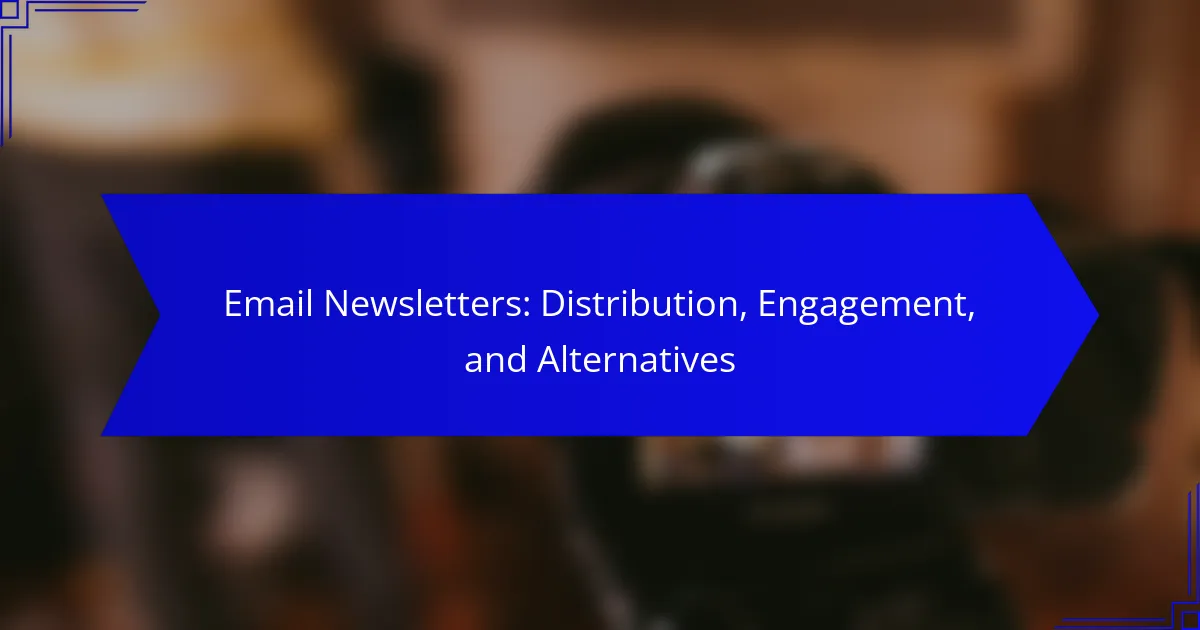Email newsletters remain a powerful tool for communication, allowing businesses to connect with their audience effectively. To maximize their impact, it’s essential to focus on reliable distribution methods, engaging content, and optimal design practices. By implementing strategies such as audience segmentation and personalization, you can significantly enhance subscriber engagement and retention.
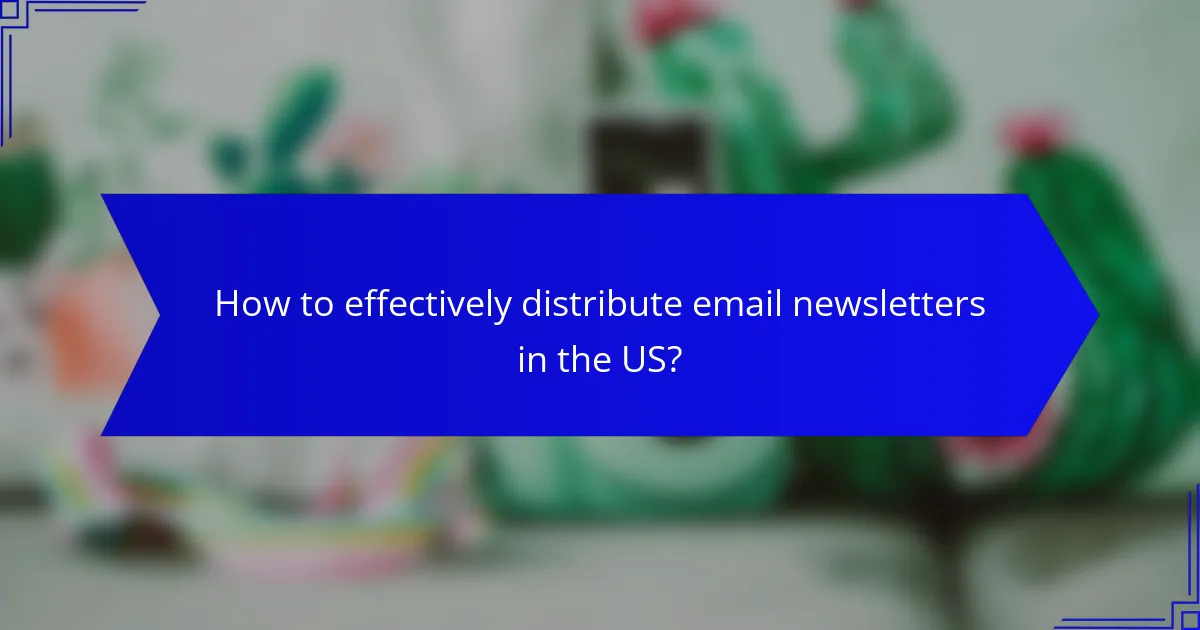
How to effectively distribute email newsletters in the US?
To effectively distribute email newsletters in the US, focus on using reliable email marketing platforms, segmenting your audience, optimizing send times, and leveraging social media for promotion. These strategies enhance engagement and ensure your newsletters reach the right people at the right time.
Utilize email marketing platforms like Mailchimp
Email marketing platforms such as Mailchimp offer user-friendly tools for designing, sending, and tracking newsletters. They provide templates, automation features, and analytics that help you understand subscriber behavior and engagement levels.
When choosing a platform, consider factors like pricing, scalability, and integration with other tools you use. Many platforms offer free tiers for smaller lists, making them accessible for businesses of all sizes.
Segment audience for targeted campaigns
Segmenting your audience allows you to tailor content to specific groups based on demographics, interests, or behaviors. This targeted approach can significantly improve open and click-through rates, as subscribers receive content that resonates with them.
Common segmentation strategies include geographic location, purchase history, and engagement level. For instance, you might send different newsletters to active customers versus those who haven’t engaged recently.
Optimize send times for maximum open rates
Choosing the right time to send your newsletters can greatly impact open rates. Generally, mid-week mornings or early afternoons are considered optimal, as many people check their emails during these times.
Test different send times to find what works best for your audience. Monitor engagement metrics to refine your strategy, aiming for a consistent schedule that keeps your brand top-of-mind without overwhelming subscribers.
Leverage social media for cross-promotion
Using social media to promote your email newsletters can expand your reach and attract new subscribers. Share snippets or highlights from your newsletters on platforms like Facebook, Twitter, and Instagram to entice followers to sign up.
Encourage your existing subscribers to share your newsletters on their social media, creating a ripple effect. Consider running contests or offering incentives for referrals to boost your subscriber base through social channels.
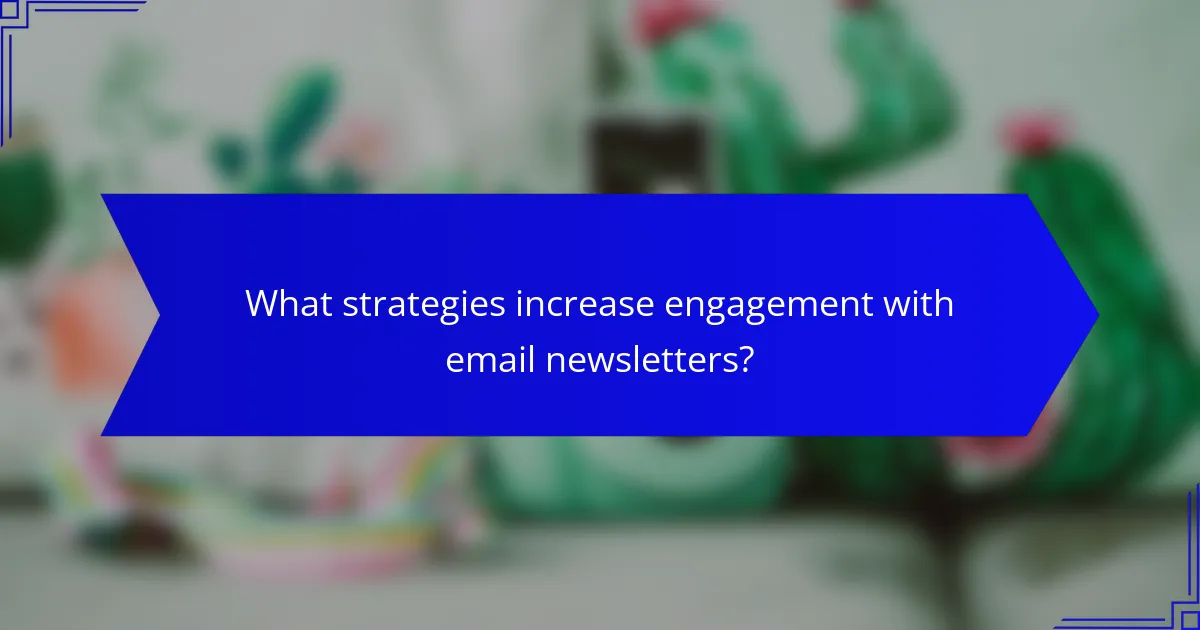
What strategies increase engagement with email newsletters?
To enhance engagement with email newsletters, focus on personalization, interactive elements, and compelling subject lines. These strategies can significantly improve subscriber interaction and retention.
Personalize content for individual subscribers
Personalizing content involves tailoring newsletters to meet the specific interests and preferences of each subscriber. This can be achieved through segmentation based on demographics, behavior, or past interactions.
Consider using the subscriber’s name in the greeting and recommending products or articles based on their previous purchases or clicks. This approach can increase relevance and foster a stronger connection with your audience.
Incorporate interactive elements like polls
Adding interactive elements such as polls or surveys can significantly boost engagement. These features encourage subscribers to participate actively, making them feel valued and heard.
For instance, you can include a simple poll asking for feedback on recent content or preferences for future topics. This not only increases interaction but also provides valuable insights into your audience’s interests.
Use compelling subject lines to boost open rates
Compelling subject lines are crucial for increasing open rates. A well-crafted subject line should be concise, intriguing, and relevant to the content of the newsletter.
Try using action-oriented language or posing questions that pique curiosity. For example, instead of “Monthly Newsletter,” consider “Unlock Exclusive Tips for Your Next Adventure!” This approach can lead to higher engagement rates as subscribers are more likely to open and read your emails.
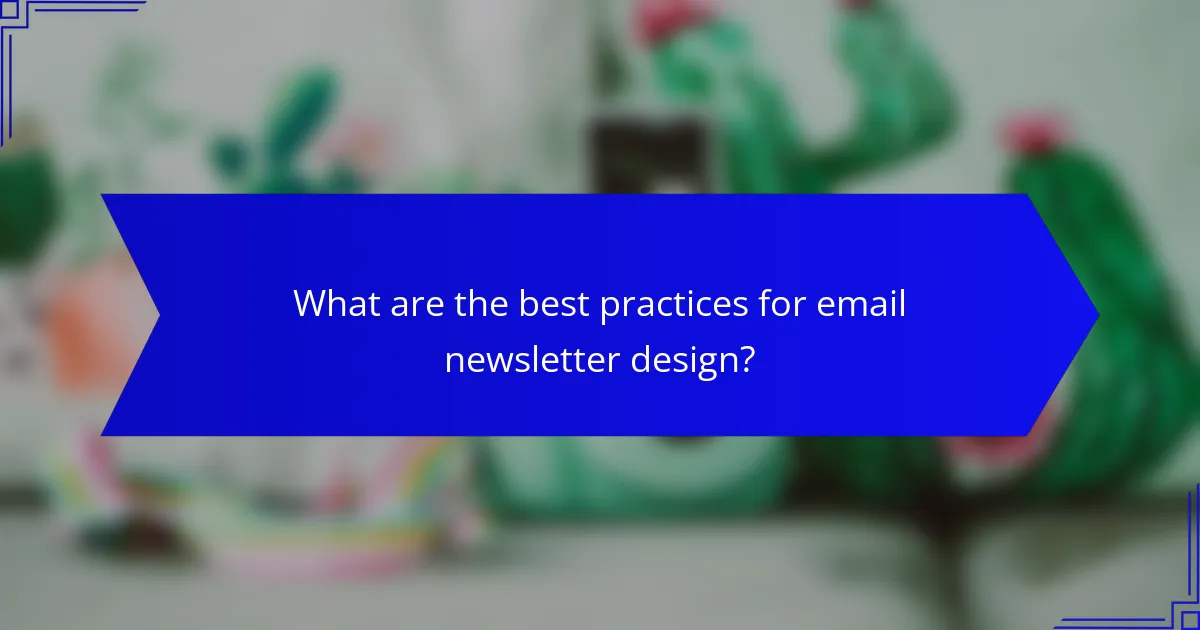
What are the best practices for email newsletter design?
Effective email newsletter design focuses on clarity, engagement, and responsiveness. By following best practices, you can enhance user experience and increase interaction rates with your content.
Ensure mobile responsiveness
Mobile responsiveness is crucial as a significant portion of email opens occurs on mobile devices. Design your newsletter to adapt seamlessly to various screen sizes, ensuring that text is readable and images are appropriately sized.
Use responsive design techniques such as fluid grids and flexible images. Test your emails on different devices and email clients to ensure consistent performance and appearance.
Maintain a clean and organized layout
A clean and organized layout helps readers navigate your content easily. Use a logical structure with clear headings, subheadings, and sections to guide the reader’s eye through the newsletter.
Consider using white space strategically to avoid clutter. Limit the number of fonts and colors to create a cohesive look, making sure that your branding is consistent throughout the design.
Include clear calls-to-action
Clear calls-to-action (CTAs) are essential for driving engagement. Each newsletter should have specific actions you want readers to take, such as visiting a website, signing up for an event, or downloading a resource.
Make your CTAs prominent by using contrasting colors and placing them strategically within the layout. Use concise, action-oriented language to encourage clicks, and consider including multiple CTAs throughout the newsletter to capture different interests.
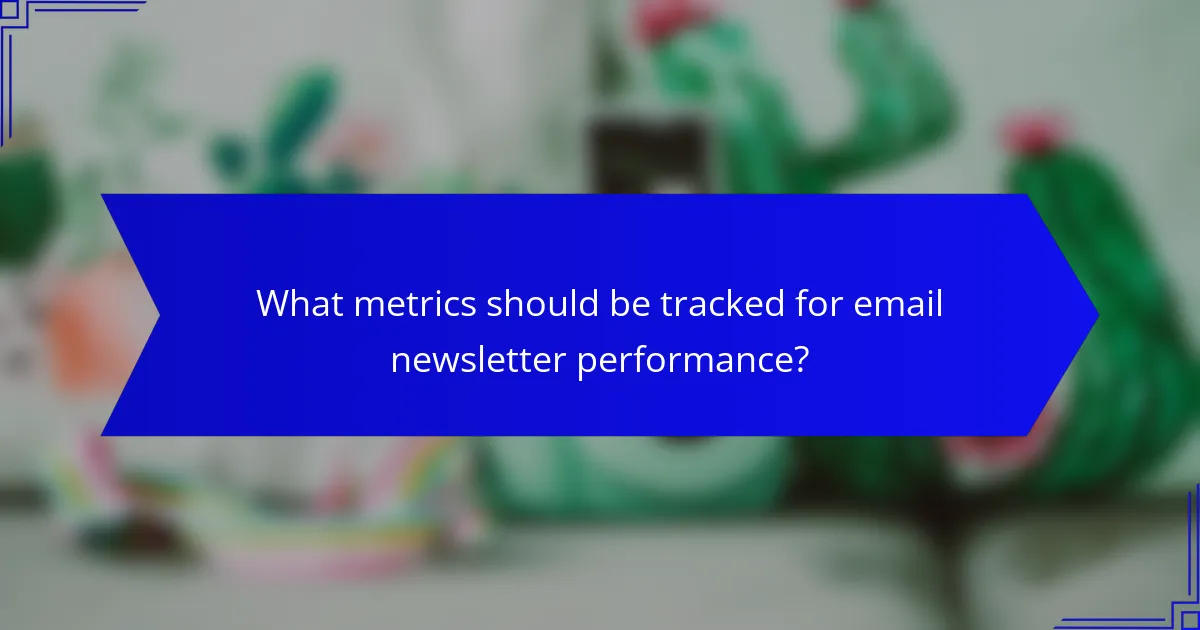
What metrics should be tracked for email newsletter performance?
To effectively evaluate email newsletter performance, focus on key metrics such as open rates, click-through rates, and conversion rates. These indicators provide insights into how well your content resonates with your audience and how effectively it drives desired actions.
Monitor open rates and click-through rates
Open rates indicate the percentage of subscribers who open your email, while click-through rates measure how many of those who opened the email clicked on links within it. A typical open rate ranges from 15% to 25%, whereas click-through rates often fall between 1% and 5%. Tracking these metrics helps assess the effectiveness of your subject lines and content.
To improve these rates, consider A/B testing different subject lines and content formats. Avoid using misleading subject lines, as this can lead to higher unsubscribe rates and damage your brand’s reputation.
Analyze conversion rates from newsletter traffic
Conversion rates reflect the percentage of newsletter readers who take a specific action, such as making a purchase or signing up for a webinar. This metric is crucial for understanding the direct impact of your newsletter on business goals. A good conversion rate typically ranges from 2% to 5%, depending on the industry and the nature of the call-to-action.
To enhance conversion rates, ensure that your newsletters include clear and compelling calls-to-action. Monitor the entire customer journey from the newsletter to the final conversion to identify any drop-off points that may need addressing.
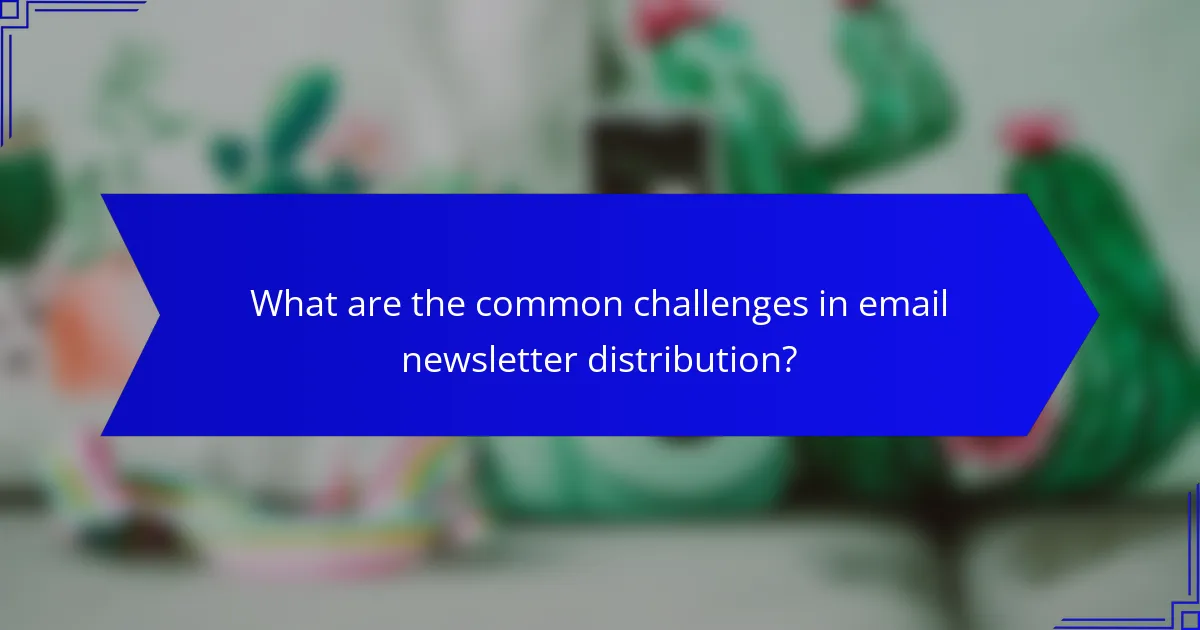
What are the common challenges in email newsletter distribution?
Email newsletter distribution faces several challenges, including ensuring deliverability, maintaining subscriber engagement, and managing lists effectively. Overcoming these hurdles is crucial for achieving high open and click-through rates.
Dealing with spam filters
Spam filters can significantly hinder email newsletter distribution by blocking messages before they reach subscribers. To improve deliverability, ensure that your content is relevant and avoid spammy language, such as excessive capitalization or exclamation marks.
Regularly monitor your sender reputation and authenticate your emails using protocols like SPF and DKIM. This helps establish credibility with email providers and reduces the likelihood of being marked as spam.
Managing subscriber lists effectively
Effective management of subscriber lists is essential for successful email distribution. Regularly clean your list by removing inactive subscribers and ensuring that your contacts have opted in to receive communications. This practice not only improves engagement rates but also helps maintain compliance with regulations like GDPR.
Segmenting your audience based on interests or behaviors can enhance the relevance of your newsletters. Tailored content is more likely to resonate with subscribers, leading to higher open and click-through rates. Consider using tools that automate list management and segmentation for efficiency.
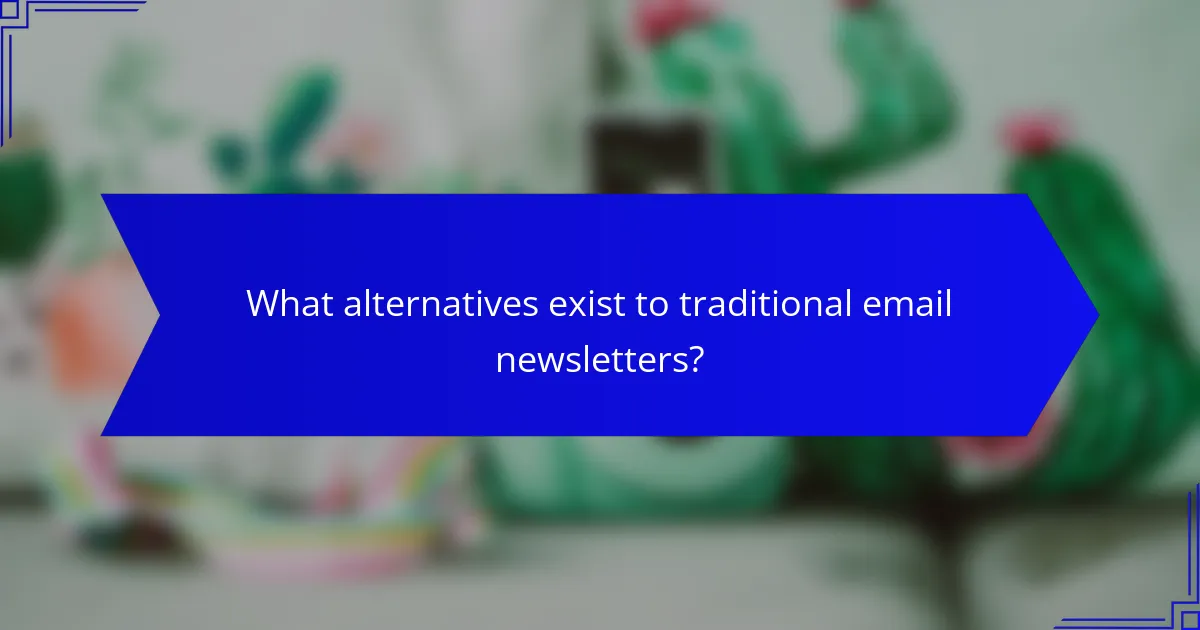
What alternatives exist to traditional email newsletters?
Alternatives to traditional email newsletters include messaging apps and social media platforms that facilitate direct communication and content sharing. These methods can enhance engagement and reach audiences in more interactive ways.
Utilizing messaging apps like WhatsApp for updates
Messaging apps such as WhatsApp allow businesses to send updates directly to subscribers’ phones, creating a more immediate and personal connection. Users can receive notifications about new products, promotions, or events in real-time.
To effectively use WhatsApp for updates, consider creating a broadcast list to send messages to multiple contacts at once. Ensure that subscribers have opted in to receive these messages to comply with privacy regulations.
Keep messages concise and engaging, and use multimedia elements like images or videos to capture attention. Aim for a frequency that maintains interest without overwhelming recipients, such as weekly or bi-weekly updates.
Exploring social media newsletters via platforms like Substack
Platforms like Substack enable creators to publish newsletters directly on social media, allowing for broader distribution and engagement. These newsletters can be shared easily across various channels, reaching audiences who prefer social media over email.
When using Substack, focus on building a community around your content by encouraging comments and discussions. This interaction can foster loyalty and increase the likelihood of subscribers sharing your newsletter with others.
Consider offering exclusive content or incentives for subscribers to encourage sign-ups. Regularly analyze engagement metrics to refine your approach and ensure that your content resonates with your audience.
